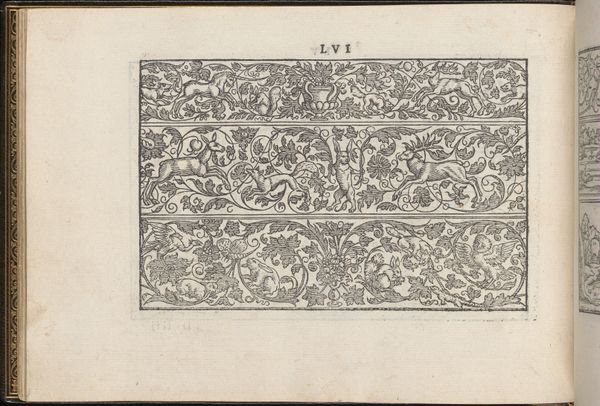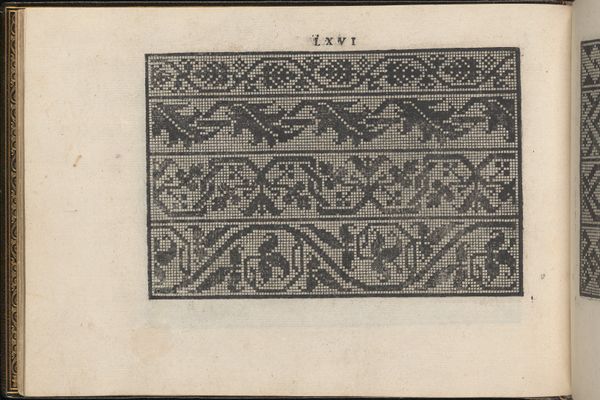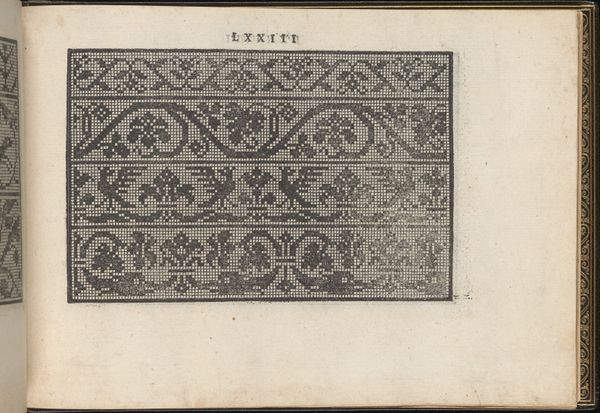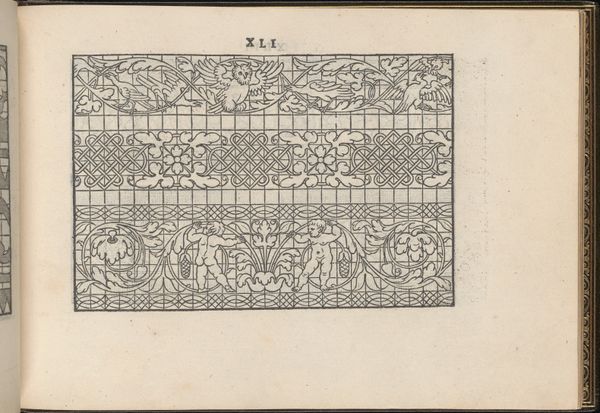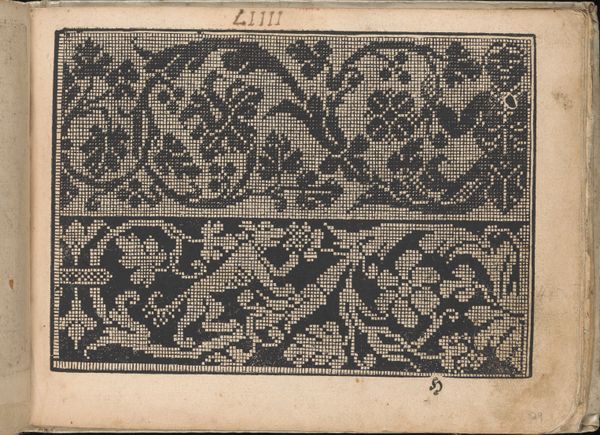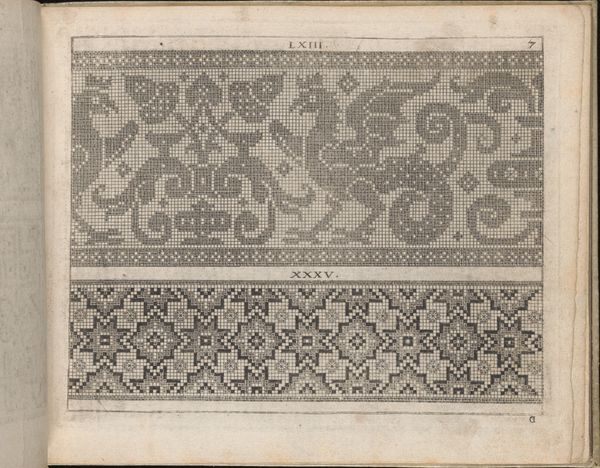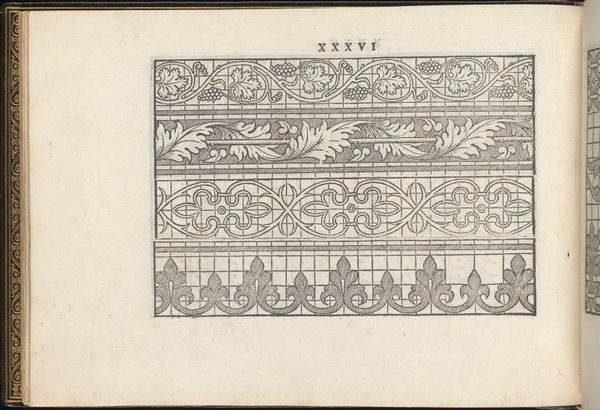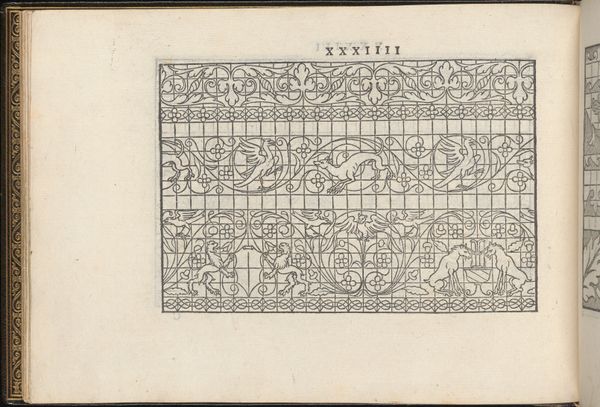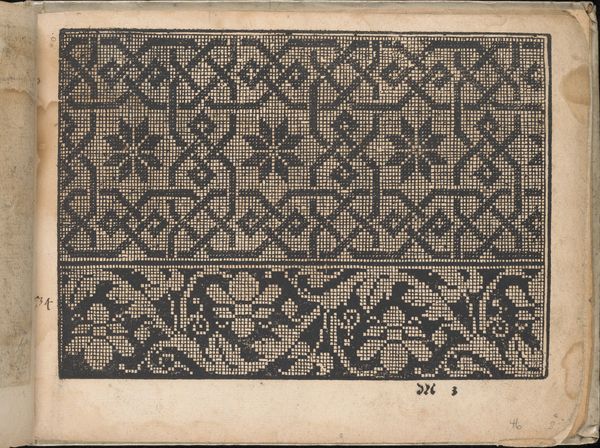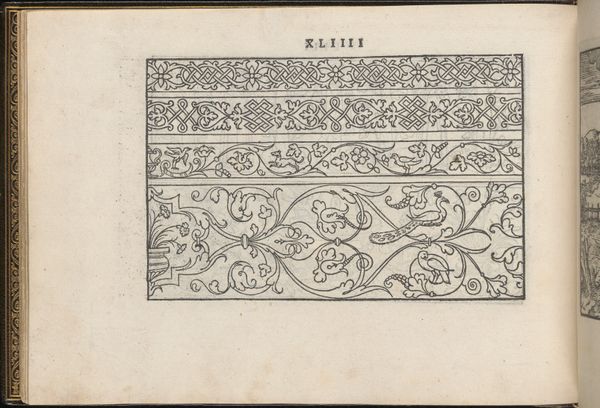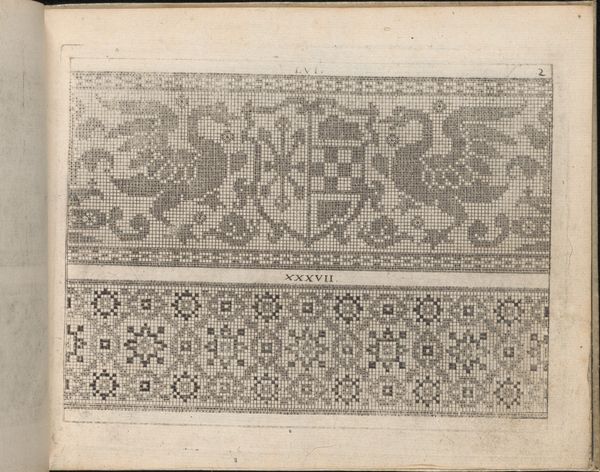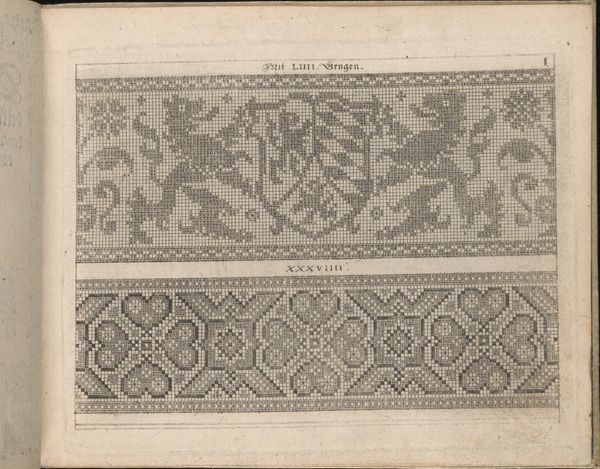
La Vera Perfettione del Disegno di varie sorti di recami, page 36 (verso) 1567
0:00
0:00
drawing, ornament, print, engraving
#
drawing
#
ornament
# print
#
11_renaissance
#
geometric
#
decorative-art
#
italian-renaissance
#
engraving
Dimensions: Overall: 6 5/16 x 8 7/16 in. (16 x 21.5 cm)
Copyright: Public Domain
Curator: This page, from a printmaking book, is entitled "La Vera Perfettione del Disegno di varie sorti di recami," made in 1567 by Giovanni Ostaus. What catches your eye about it? Editor: Initially, I'm drawn to the graphic starkness, the sheer geometry. It feels almost like early computer pixel art. Curator: Interesting, considering its historical moment. This comes from a manual intended for lacemakers and embroiderers. Consider the sociopolitical implications here. Who had access to such skills and the leisure to engage in them? Ornament and embroidery at this time marked class, gender, and access to knowledge. These weren't simply aesthetic pursuits. Editor: Absolutely, I see that. But beyond that initial assessment, these patterns speak to something deep in our human need for order, for translating nature—foliage, birds—into a symbolic system. These images echo across centuries of textiles and crafts. Curator: Precisely. These patterns became a visual language, used to affirm or subvert existing social hierarchies through adornment. And to see it reproduced via engraving—that process speaks to both democratizing the design and setting new standards for how women produced embroidery. Editor: The symbolism intrigues me. Birds often represent freedom, but constrained within these geometric forms, what does that signify? There's a tension between the natural world and human-imposed structure. Curator: Consider also the book's title – "The True Perfection of Design." Whose perfection? What's considered ideal, and who sets those standards? And more important than whose standards, who does this oppress in not aligning. Editor: A powerful question. I now see this not as simply a pretty pattern, but as a complex interplay of symbolism and sociopolitical significance that reflects a specific historical moment. It has changed the meaning now for me. Curator: That shift in understanding highlights art's continuous negotiation between meaning and experience. And by observing that intersection we enable others to consider the role art serves in our modern lives.
Comments
No comments
Be the first to comment and join the conversation on the ultimate creative platform.
